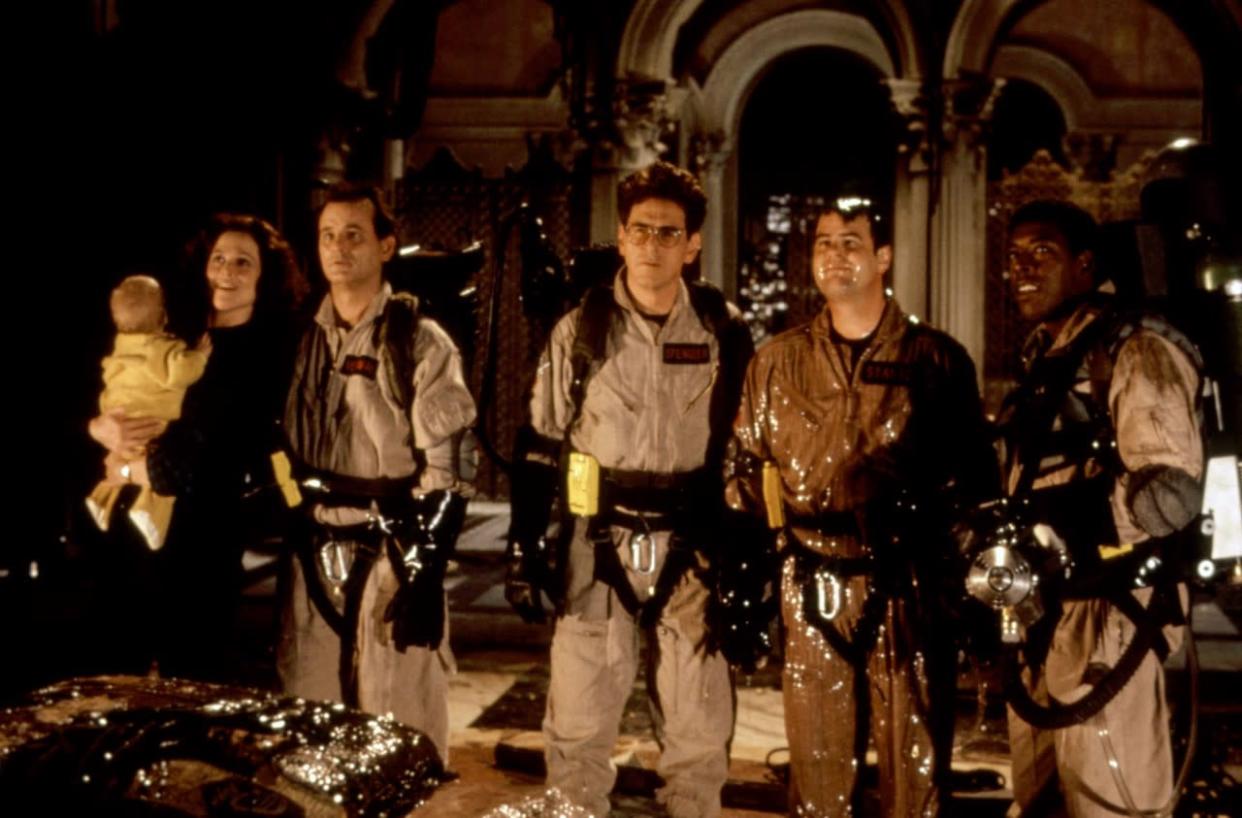'Ghostbusters II': Its 6 Biggest Failures — and 2 Redeeming Qualities!

The gang in ‘Ghostbusters II’ (Everett)
The new Ghostbusters reboot may have engendered the wrath of select fans concerned about having their childhoods ruined. But along the way something vital has been forgotten: No matter what people think of the new movie, the franchise was already irreparably sullied way back in 1989, with the release of Ghostbusters II. As humorless and unimaginative as a sequel can be, Ivan Reitman’s follow-up to his 1984 hit is driven not by narrative demands or new ideas but, rather, by a simple desire to cash in on its precursor’s success. It barely did that — earning only $112.4 million at the box office (compared to the first film’s original $229.2 million take) — and, thus, ended the series’ big-screen life for the better part of three decades. With Paul Feig’s all-female version set to proton-blast its way into theaters this Friday, we took a look back at the six biggest problems (and two redeeming qualities) of the dreadful sequel that truly tarnished Ghostbusters’ legacy.
Related: 15 Things You Never Knew About the Original ‘Ghostbusters’
THE BAD:
Suspense-Free Baby-in-Peril Nonsense
Ghostbusters II opens with Sigourney Weaver’s Dana Barrett pushing her infant child down a New York City sidewalk in a stroller, which runs over some slime coming up through the ground and promptly becomes possessed, taking the kid on a joy ride through traffic while a harried Barrett chases after it. It’s a drearily unfunny and tension-free sequence that sets the tone for the rest of the proceedings, which repeatedly place Barrett’s kid in jeopardy. It’s an increasingly aggravating attempt to ratchet up suspense.
Bill Murray’s Lame, Listless Riffing
Bill Murray is a national treasure, but he’s rarely looked as bored as he does in Ghostbusters II, which forces his Peter Venkman to again act charmingly buffoonish in order to woo Weaver’s Barrett — who, in the five years between films, has married, had a child, and gotten divorced. Murray’s one-liners are of a painfully unfunny sort: He jokes that Barrett’s son Oscar is named after a hot dog; he affects a New Yawk accent while posing as a construction worker; he goes overboard mimicking a fashion photographer (“destroy me! Yeah! Yeah!”). It’s a hopelessly tuned-out performance that prevents the film from ever developing a sense of comedic momentum.
Peter MacNicol’s Intolerable Shtick
In Ghostbusters II, Barrett works at the Manhattan Museum of Art as an art restorer under the guidance of Peter MacNicol’s Dr. Janosz Poha, who has the hots for Barrett, and who eventually becomes possessed by the spirit of 16th-century madman Vigo the Carpathian of Moldovia (via his towering portrait). Boasting a nails-on-a-chalkboard accent of vague “foreign” origin, MacNicol embodies his character as a gratingly semi-foppish cretin. It’s an over-the-top performance that’s clearly aimed at getting laughs, but only inspires revulsion instead.
So. Much. Slime.
Ghostbusters II is awash in slime, thanks to a river of goo coursing through Manhattan’s sewers. While the reasons for this tidal wave of subterranean supernatural sludge is one of the film’s only praise-worthy elements (see below), the incessant use of slime for tepid gags — often involving it bubbling up to explosive ends in glass containers — quickly wears out its welcome. The original’s “he slimed me” bit may have been a classic, yet in scene after tedious scene, the film proves that the haunted slop has just about zero comedic value.
Everything is Rehashed From Its Predecessor
The contentiously flirty Murray-Weaver banter. The tall weasely government jerk determined to ruin the Ghostbusters (here, Kurt Fuller, in place of William Atherton). Weaver’s damsel-in-distress. Ernie Hudson’s fourth-wheel-afterthought role. The sight of ghosts passing through one of the heroes (in this case, a spectral train violating Hudson’s Winston Zeddemore). Rick Moranis’s unkempt hair. A climax focused on a larger-than-life giant stomping through the streets of Manhattan. In just about every respect, Ghostbusters II merely duplicates what worked the first time — to predictably deflating results.
The New Logo
The ghostbusters’ uniforms (and their firehouse HQ’s sign) now feature the film’s updated logo, which has a ghost holding up two fingers. Does this mean that the characters know they’re in a sequel? Or is it their way of saying that this is their “second chance” at making a good impression on the public? Or, maybe, do they think it refers to ghostly peace? Branding be damned, this minor but nagging detail — like so much of the film — makes absolutely no sense.
THE NOT-SO-BAD:
The Enemy is New Yorkers’ Anger
Part of what makes Ghostbusters II such a monumental letdown is that it has a clever core conceit: namely, that the city’s underground river of slime is a physical manifestation of Manhattanites’ surliness. That the city’s inhabitants are fueling their own demise — via their stereotypical grouchiness — is an idea that amusingly roots the story’s supernatural chaos in the real world. Unfortunately, the filmmakers don’t go anywhere interesting with their premise. Yet even so, it’s the sole facet of this otherwise redundant film that feels fresh.
Too Hot to Handle, Too Cold to Hold
Few songs have ever been as stuck-in-your-head-for-days catchy as Ray Parker Jr.’s original “Ghostbusters” theme song. However, Bobby Brown’s lead single from the Ghostbusters II soundtrack, “On Our Own” — which is featured prominently in the film and leads to a big-screen Brown cameo as well — remains a surprisingly worthy follow-up, replete with its own memorable celebrity-filled music video.

